Be Jovial in the Czech Republic in 2015
(Travel Story Series @ Hon Too Fang 2021)
Preface
In June 2015 we joined 17 others for a 23-day group tour to Central Europe, setting foot on Austria, Slovakia, Poland and the Czech Republic. This story is on the Czech Republic.
Hope you could take the tour with us. It is free. No hidden cost. No advertisement. This one is - be jovial, like enjoying the “Five-petal Rose Festival” in Cesky Krumlov.
Hon
(28-01-2016)
Czech Republic the country
The Czech Republic is a landlocked country, 79,000 sq km in area (slightly bigger than Sabah) with some 10.5 million people. In ethnicity, 64% Czechs, 5% Moravians, 26% unspecified. The national language is Czechs, a West Slavic language. In religion, 2011 estimate says Catholics 10%, no religion 34%, not-to-answer 45%, Protestants 1%, other religions 9%. Quite a diversified country compared to the other 3. The capital is Prague with 1.3 million people.
We visited Prague, Karlovy Vary and Cesky Krumlov.
1 - Prague
Prague is an old city with recorded existence of over 2,500 years. Over the course of history it has been the capital of Bohemia, seat of 2 Holy Roman Emperors, an important city during the Hapsburg Monarchy and Austro-Hungarian Empire, and the Protestant Reformation. In short it is very historical. The rich history attracts many tourists. It is the 5th most-visited European city, after London, Paris, Istanbul and Rome. The historic town centre is a UNESCO World Heritage site.
Old Town
The old town is represented by the Old Town Square. The square is famous for having buildings of various architectural styles, including the Church of Our Lady before Týn in Gothic design, 3rd photo; the Kinsky Palace in Rococo style, 4th photo; the Storch House in Neo-Gothic, 5th photo and the concert hall Rudolfinum in Neo-Renaissance, 6th photo.
We could forget about the serious matter of architecture. Follow our theme of “Be jovial in the Czech Republic”. Be jovial, smell the blooming roses in the gardens, or take a selfie, like this Chinese couple on their wedding photo-shoot. Have a horse-cart ride, or hop on to a tram.
Now we go to visit a few famous structures around the square.
Medieval Clock
The medieval astronomical clock is certainly the most “viewed” of the attractions in the Old Town. It is mounted on the wall of the old City Hall building. The clock was first installed in 1410, making it the third-oldest astronomical clock in the world and the oldest one still working.
There are two main dials: the astronomical dial with 4 fixed statues and the calendar dial with 4 moving figures. There are four moving figures representing 4 things that were despised at the time of the clock's making. They are Vanity, Miser, Death and Lust. On the hour, the skeleton, representing Death, rings the bell and immediately all other figures shake their heads, side to side, signifying they are not ready or willing "to go" yet. Very fascinating.
You shake your head too, jovially?
Jan Hus Monument
The square's centre is home to a statue of religious reformer Jan Hus (1372-1415), who for his beliefs was burned at the stake in 1415, which led to the Hussite Wars. Not a jovial period for Prague. He is one of the forerunners of the Protestant Reformation. The memorial was erected in 1915. Jan Hus became a symbol of strength against oppressive regimes.
Two other monuments in the neighbourhood: the graceful statue of an angel in front of the Rudolfinum, and the ugly Monument of Emperor Francis I of Austria, erected in 1850.
Prague Castle
Prague Castle has been a seat of power for kings of Bohemia, Holy Roman Emperors, and presidents of Czechoslovakia, and now the Czech Republic. It was founded in 888 and continued to be rebuilt and expanded over the centuries, in particular during 1346-1378.
The Guinness Book of Records lists Prague Castle as the largest ancient castle in the world, 70,000 sq m in size, 570 m long and 130 m wide. The 1st photo is a view of the Castle from the lower ground while the 2nd is a view of the old town from a high point in the Castle. Shown the garden and square within the Castle ground.
The decorative fountain has other uses on a hot summer day, and lastly a statue of the knight named Dalibor who is the 1st prisoner in the prison inside the Castle, and according to legend, played his violin very sadly serenading the castle residents.
St. Vitus Cathedral
This cathedral is an excellent example of Gothic architecture and has tremendous influence on the development of the Late Gothic style for Central Europe. It is located within Prague Castle. Construction of this 3rd version started in 1344 and was fully completed some 600 years later. It is the venue of the royal coronations. Shown some exterior views: the southern façade, the west and main portal, a typical gate and the 103 m main (south) tower.
Shown the slender nave with vaulted ceiling, typical of Gothic structures, and a rather contemporary sculpture. The church is famous for its many big panels of stained glass windows, completed around the early 1920s. The rose window on the front portal is most famous but we could not get a proper shot of it at ground floor level. Just show two other panels.
Other Churches
We visited several other churches here. To a Catholic, visiting a church is a joyous moment, in line with the theme of “Be jovial in the Czech Republic”.
St Nicholas Church
The St Nicholas Church is a Baroque church built in the early 1700s replacing a Gothic version. Ornately decorated interior, shown the main nave and a side aisle, painted ceiling below the dome, a side chapel, a stained glass panel, and two unconventional images of the Madonna.
St Salvator Church
The St Salvator Church marks the entrance to the Old Town from the Charles Bridge. It was built in Gothic style between 1578 and 1601. Later Baroque elements were added as decorations, like the facade with portico decorated with sculptures. Shown also the grotto with the statue of Our Lady of Lourdes.
Charles Bridge
The Charles Bridge is a famous historic stone arch bridge that crosses the Vltava River. Its construction started in 1357 and finished about 150 years later. The bridge is 621 m long and nearly 10 m wide, resting on 16 arches, protected by 3 bridge towers.
The bridge is decorated by a continuous alley of 30 statues and statuaries, most of them Baroque-style, originally erected around 1700 but now all replaced by replicas with the original in the National Museum. It is a UNESCO World Heritage Site.
The structure in the 2nd photo is the Powder Tower, one of the 13 original gates to the Old Town, first built in 1475 and last renovated in the 1870s. The statues are The Lamentation of Christ depicting St Mary Magdalene and Virgin Mary mourning the dead of Christ, The Calvary depicting the Virgin Mary and St John the Evangelist at Calvary, St John the Baptist and a group of 3 saints: St Barbara, St Margaret and St Elizabeth.
2 - Karlovy Vary
This is a spa town some 130 km west of Prague, with a population of 50,000. It is historically famous for its hot springs, with 13 major ones.
The streets
The main street follows the course of the Tepla River. We just jovially “lepak” here for half a day. Not many people on the streets.
One famous building is the Mill Colonnade, Neo-Renaissance in design, 132 m long with 124 Corinthian columns. It houses 5 major hot springs.
The Church of St Mary Magdalene
This Catholic church was built around 1733 to 1736 in High Baroque style, replacing a Gothic one built in the 14th century. The main altar is listed as a National Cultural Monument since 2010.
Facades
And finally a variety of beautiful facades of buildings in this touristic spa town.
3 - Český Krumlov
Český Krumlov is a small town about 170 km south of Prague, near to the borders with Austria and Germany. Population 14,000. It is now a major holiday destination for the Germans and Austrians.
The Old Town
The old town was dated to the 13th century, the core within a horseshoe bend of the Vitava River. The older buildings, like the castle, are dated to the 14th to 17th centuries. It is a UNESCO World Heritage site. The whole of the old town is a pedestrian zone.
Shown also the Plague Column erected in 1716 in memory of those died in the epidemic that hit the town in 1680-82. And a status of ordinary folks, one of many in the town.
Church of St Vitus
The main church here is the Church of St Vitus, first completed in 1349, with many chapels added or renovated in later centuries. The original Baroque tower was replaced with an octagonal tower in 1894. Visited the church with old friend and fellow Catholic Maggie.
The Synagogue
A synagogue was built here in 1908. When the Germans invaded the town in 1938, the synagogue was desecrated. It was turned into a Nazi youth camp, later a Protestant church, a store, etc. It was returned to the Jewish community in 1996 and they completed its renovation in 2013. A jovial occasion indeed. Shown the simple stained glass panel on the wall at the altar end, showing the Star of David.
Český Krumlov Castle
The castle is unusually large for a town of Krumlov's size; within the country it is second in extent only to the Prague Castle. Inside its grounds are a large garden, a bridge over a deep gap in the rock upon which the castle is built, and the castle itself, consisting of 40 buildings and palaces. The beautiful castle tower dominates the skyline of the town.
The castle has a small museum, shown some jovial faces from the Orient.
From the castle tower one could enjoy the panoramic view of the beautiful town.
The Five-petal Rose Festival
History
Český Krumlov is an historic town. During medieval times the noblemen used to organise fests here. The act of hosting a grand festival was revived in 1968, and continued in 1969 and 1970. However it was discontinued thereafter as the communist government was not eager to endorse a festival originated by the feudal lords.
After the communists were toppled the desire of having a jovial festival returned and it was first held in 1990. And it was held every year since, making 2015 the 26th edition.
Why Five-petal Rose?
The town and the castle were founded by the House of Rosenberg in the 1250s. They were a Bohemian noble family and their coat of arm had a red five-petal rose. Hence the name of the festival.
What they do during the festival?
For 3 days in June, the downtown area is recreated as a medieval town with craftsmen, artists, musicians, and local people dressed in costumes from the Middle Ages. Various activities such as jousting, fencing, dance performances, and folk theatre will take place. The festival is concluded by a fireworks show above the castle.
Photo Gallery
Craft fair
The shows
The audience
The musicians
The children
The soldiers
The singles
The doubles and more
And finally, presenting The Three Sweepers, their long skirts cleaning the streets
On that jovial mood, the story is concluded.
**********************
Footnote: The tour is marketed by YonGo Travel (www.yongo.biz)
(First written in the email format in January 2016. Heavily revised to this PDF format in July 2021)

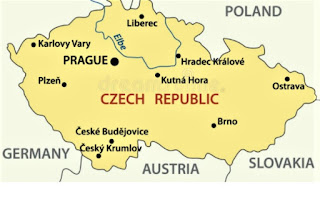













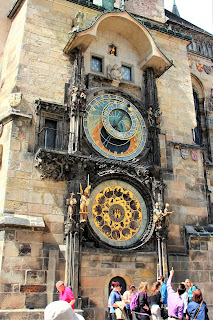















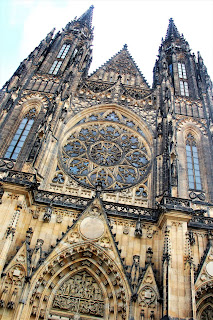




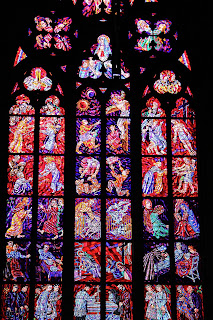


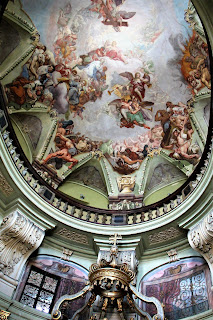
























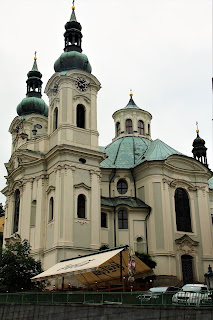








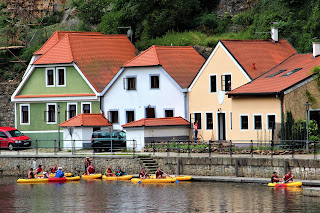










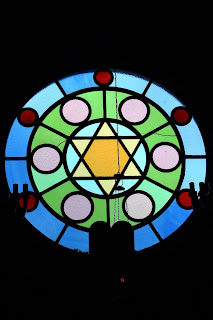



















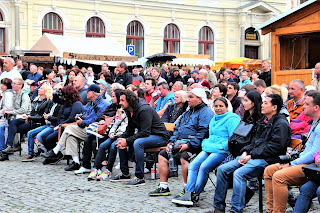

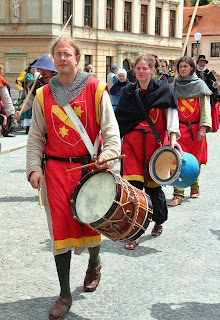
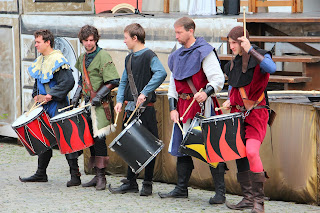


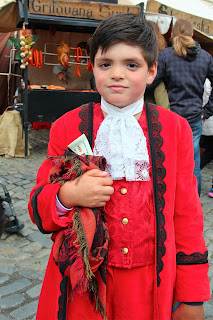






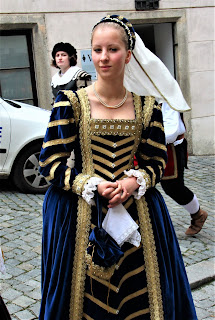








No comments:
Post a Comment